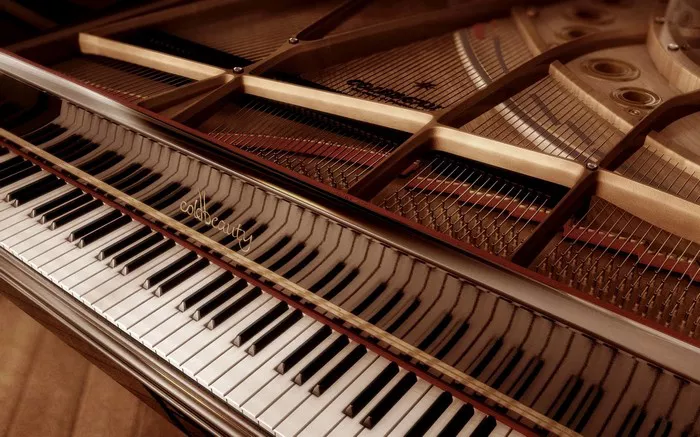Light classical music is a subgenre of classical music that is characterized by its lighter, more accessible, and often more cheerful sound. Unlike the more intense and complex compositions typically associated with classical music, light classical music aims to be more approachable and enjoyable for a wider audience. This genre includes a variety of styles and forms, making it a rich and diverse category within the broader classical music world.
I. History and Origins
Light classical music has roots that stretch back to the early days of classical music itself. During the Baroque period (1600-1750), composers like Johann Sebastian Bach and George Frideric Handel wrote music that included both complex, serious pieces and lighter, more accessible works. These lighter pieces often served as entertainment for the courts and public gatherings.
In the Classical period (1750-1820), composers such as Wolfgang Amadeus Mozart and Franz Joseph Haydn wrote music that was intended to be enjoyed by a broad audience. Their works included symphonies, chamber music, and operas that were both sophisticated and accessible. Haydn, in particular, is known for his playful and humorous compositions, which are quintessential examples of light classical music.
The Romantic period (1820-1900) saw a continuation of this trend, with composers like Johann Strauss II and Franz von Suppé creating light operettas and dance music that were immensely popular. These works were characterized by their catchy melodies, lively rhythms, and engaging storylines, making them favorites among audiences of all ages.
II. Characteristics of Light Classical Music
Light classical music is defined by several key characteristics that distinguish it from more serious classical compositions:
Melody: The melodies in light classical music are often simple, catchy, and memorable. They are designed to be easily recognizable and enjoyable, even on first listen.
Rhythm: The rhythms are typically lively and upbeat, making the music feel energetic and engaging. Dance forms such as waltzes, polkas, and marches are common in this genre.
Form: Light classical music often follows traditional forms such as the rondo, theme and variations, and binary form. These structures are straightforward and familiar to listeners.
Instrumentation: While light classical music can be written for a variety of ensembles, it often features smaller groups, such as chamber ensembles or solo instruments, making the music feel more intimate and personal.
Mood: The overall mood of light classical music is typically cheerful, playful, and entertaining. It aims to uplift and delight the listener rather than evoke deep emotional responses.
III. Notable Composers and Works
Many composers have contributed to the light classical music repertoire. Here are a few notable examples:
Johann Strauss II: Known as the “Waltz King,” Strauss II is famous for his dance music, particularly his waltzes and polkas. His compositions, such as “The Blue Danube” and “Radetzky March,” remain popular to this day.
Franz von Suppé: An Austrian composer known for his operettas and light orchestral works. His overtures, such as “Light Cavalry” and “Poet and Peasant,” are staples of the light classical repertoire.
Arthur Sullivan: Best known for his collaborations with librettist W.S. Gilbert, Sullivan’s operettas, including “The Pirates of Penzance” and “H.M.S. Pinafore,” are beloved for their witty lyrics and charming music.
Leroy Anderson: An American composer who specialized in light orchestral music. His pieces, such as “The Typewriter” and “Sleigh Ride,” are characterized by their clever use of orchestration and humorous elements.
IV. Light Classical Music in Popular Culture
Light classical music has a significant presence in popular culture. Its catchy melodies and engaging rhythms make it a favorite choice for film scores, television soundtracks, and commercials. For example, the overture to Rossini’s opera “William Tell” is widely recognized as the theme for “The Lone Ranger,” while Strauss’s “The Blue Danube” was famously used in Stanley Kubrick’s film “2001: A Space Odyssey.”
Moreover, light classical music often serves as an entry point for people who are new to classical music. Its approachable and enjoyable nature makes it an excellent way to introduce audiences to the world of classical music without overwhelming them with more complex and serious compositions.
V. Modern Interpretations and Performers
In contemporary times, many musicians and ensembles continue to perform and reinterpret light classical music. Modern orchestras, chamber groups, and soloists frequently include light classical pieces in their repertoires, ensuring that this genre remains vibrant and relevant.
Additionally, there are numerous recordings and performances available on streaming platforms, making it easier than ever for listeners to discover and enjoy light classical music. Prominent modern performers of light classical music include André Rieu, whose Johann Strauss Orchestra has brought the waltzes and polkas of Strauss to a global audience, and the Boston Pops Orchestra, known for their lively and entertaining concerts.
See Also: Can Classical Music Have Lyrics?
VI. Conclusion
Light classical music holds a special place in the world of classical music. Its cheerful melodies, lively rhythms, and approachable nature make it a favorite among audiences of all ages. From the courtly dances of the Baroque period to the playful operettas of the Romantic era, light classical music has a rich and varied history. Today, it continues to delight listeners and serves as an important bridge to the broader classical music repertoire. Whether you are a seasoned classical music aficionado or a newcomer, the charm and joy of light classical music are sure to captivate and entertain.

